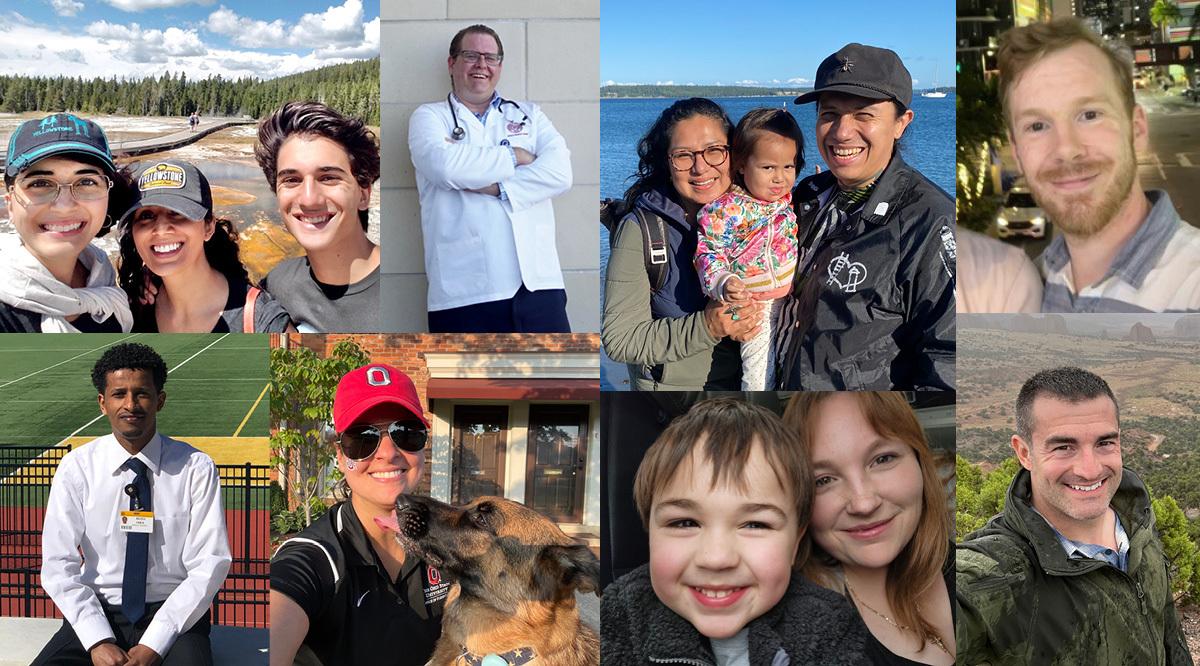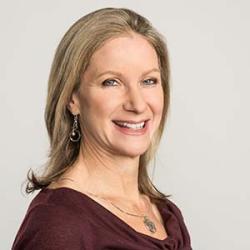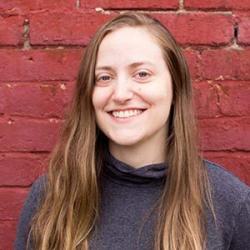For most medical students, Match Day is the most anticipated day of their medical careers — the day when they find out where they will spend the next 5-7 years training in the specialty of their choice.
For older students, many of whom have families and have spent years in another career, the day also marks a milestone that many have been dreaming of for decades.
“If I had gone to medical school when I thought I was going to in my early 20s, I wouldn’t have been the same doctor that I’ll be now,” says Stephanie Schaumberg, 43, who was accepted into the University of Wisconsin School of Medicine and Public Health right after college but ultimately decided to pursue a business career in part so she’d have time to help care for her disabled father. “Everything comes in its own time.”
AAMCNews interviewed eight such students, who shared why they decided to go into medicine after another career, as well as their hopes and plans for residency training. Here are their stories.
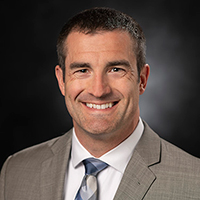
John Hesling, 38
University of Colorado School of Medicine
Physical medicine and rehabilitation
Previously: Navy fighter pilot
Upon first reflection, flying F/A-18s as a fighter pilot in the Navy and helping patients recover from serious illnesses and injuries might not have a lot in common. But for John Hesling, 38, a Naval Academy and Top Gun graduate who is now a 4th year medical student at the University of Colorado School of Medicine, the two are more similar than not. And both appeal to Hesling's strong desire to serve his country.
“When I was at the Naval Academy, I volunteered at Baltimore Shock Trauma, and that kind of formed for me the idea that medicine could be a meaningful way for me to continue on a service path after a military career,” Hesling says. “I saw physicians demonstrating a combination of leadership and service toward others that was especially appealing to me.”
After graduation from the Academy, Hesling went to flight school in Pensacola, Florida, then Corpus Christi, Texas, Mississippi, and eventually Virginia Beach, where he finished his training on the F/A-18 fighter jet.
His first deployment was on the USS Enterprise executing close air support missions in support of Operation Enduring Freedom in 2012, after which he was selected to attend the Navy Strike Fighter Tactics Instructor Program, better known as Top Gun, in 2014. Following graduation, he deployed again in 2017 on the USS George H.W. Bush in support of Operation Inherent Resolve against ISIS in Syria and Iraq.
As his military service commitment was ending, Hesling began to think about a second career, one that would allow him to continue his passion for leadership and service to others.
He left the Navy on July 31, 2019, and started medical school on August 2, 2019.
And on Friday, Hesling hopes to match into physical medicine and rehabilitation (PM&R), with a preliminary year in internal medicine. “I just realized PM&R was an incredible way to make an impact on patients. If I could spend my time taking a patient with a devastating illness or injury and trying to get them back to doing what they love in life, that’s a very impactful way to make a difference in people’s lives. To me, that seemed like a really beautiful way to spend my second career.”
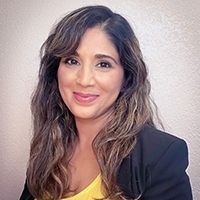
Smita Armstrong, 50
University of Arizona College of Medicine – Tucson
Family medicine
Previously: Kindergarten and third grade teacher
Smita Armstrong remembers well the tragic event that first instilled in her the call to healing. In 1984, when she was 11, she and her family were visiting her parents’ native India when a catastrophic chemical leak in Bhopal left thousands dead and hundreds of thousands injured.
“I remember that staying with me, seeing all of that suffering and seeing how there was such a need for medical care,” Armstrong recalls.
At first, though, she hoped to bring light to the plight of the suffering through making documentaries. She studied filmmaking at New York University, but also took some premed classes, keeping open the possibility of medical school.
But when Armstrong got married and became pregnant with her first child shortly after graduating from NYU, she decided to dedicate herself to her family, while promising herself that she would return to medicine when her children grew up.
As she raised her kids, she stayed busy volunteering, both at their charter school and by training as an EMT and a firefighter. When her kids were older, her work at their school led her to become a teacher’s aide, and eventually a teacher working with kids in kindergarten and third grade for four years.
It was when her daughter started college and her son was finishing high school that Armstrong decided to return to her dream of attending medical school.
Armstrong has been surprised at how she’s been able to bond with her fellow medical students, most of whom are closer in age to her children than herself (her daughter’s childhood best friend is a classmate).
“No matter how old you are, everyone’s got a story,” she says.
But she does think her experiences, from losing a friend to suicide to birthing her own children, can help her relate to her patients. It’s one of the reasons she is hoping to match into a family medicine residency on Match Day, which falls just one day after her 50th birthday.
“I feel really fortunate that, at my age, I get to look at life and say, ‘I wonder what the next adventure is going to be.’”
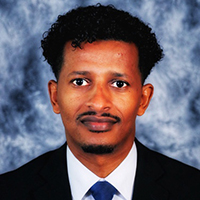
Busha Hika, 35
University of Missouri School of Medicine
Neurosurgery
Previously: Nurse in Ethiopia
Busha Hika, 35, grew up in a small village in western Ethiopia with no running water, no electricity, and no public transportation. The nearest health clinic, run by Seventh Day Adventist missionaries, was a 90-minute walk each way, and Hika remembers accompanying his mother there as a small child.
“I loved the environment,” he recalls. “It’s a very nice building with nice windows, and I loved the smell of alcohol and iodine.” It was during those visits that he decided to go into medicine. But it wasn’t until a few years later that he began to realize how many members of his small village were dying from preventable illnesses. “Even my grandpa passed away. He was sick for a few days and then he passed away,” he says. “Moms die giving birth. They die from post-birth delivery complications, and so forth. For all of those reasons, I said, ‘I need to go into medicine and help this community.’”
After finishing high school, Hika went to nursing school and then became the sole practitioner in a rural clinic, delivering babies, administering vaccines, and essentially providing primary care to both adults and children. The only treatment he could not provide was acute trauma care. “They’re farmers, and they would come in with injuries to the spine or the brain, and there was nothing I could do for them,” he says.
Fueled by a desire to learn more — and to become a physician — he immigrated to the United States in 2012, where he enrolled at South Dakota State University and then the University of Missouri School of Medicine.
This week, Hika hopes to match into neurosurgery, a field that will teach him how to care for the types of injuries he witnessed 10 years ago in Ethiopia. And while he wants to eventually practice in the United States, he also has a plan to give back to the global community, perhaps by training physicians in South America or Africa how to care for neurologically impaired patients. “In my opinion, that’s the most effective and efficient way of helping the global community.”
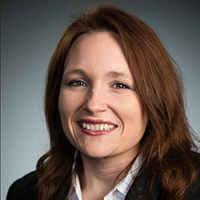
Stephanie Schaumberg, 43
Burnett School of Medicine at Texas Christian University
Psychiatry
Previously: Management consultant
While on rotation in the intensive care unit (ICU) last month, Stephanie Schaumberg recalled the times she’d been in an ICU with a very different role: the daughter of a patient.
When she was 12, her dad had a massive stroke that left him disabled. With her mom busy running their small family business in rural Wisconsin, Schaumberg became one of her dad’s primary caregivers.
As she attended college at Marquette University in Milwaukee, Schaumberg worked different jobs in the business world to help support her family. And although she was accepted to the University of Wisconsin School of Medicine and Public Health, Schaumberg felt her responsibility to her family meant she wouldn’t have time for medical school. Instead, she continued on a business trajectory. She climbed the ladder from quality assurance manager to operations manager, and ultimately became an international business leadership consultant, including working for the global candy company, Mars Inc, and an international agribusiness consulting firm.
“For lots of people that would have been a destination and an awesome career to have. They would be like, ‘How cool you get to travel all around the world and do all this cool stuff and look at all these different projects,’” she says. “But for me, it was just very unfulfilling.”
She found more meaning in volunteering as a Spanish interpreter at a free clinic and in helping her employees manage their health.
Schaumberg said she was known for counseling her employees not to complain about something if they weren’t willing to make an effort to change it. So, at 38 while pregnant with her first child, she decided to take her own advice and reapply to medical school.
Now, she brings her experiences navigating the health care system with her dad until his death in 2021 to her position as a fourth-year medical student, along with her experiences as a businesswoman and a mom of a one-year-old and a three-year-old.
“If I had gone to medical school when I thought I was going to in my early 20s, I wouldn’t have been the same doctor that I’ll be now,” she says. “Everything comes in its own time.”
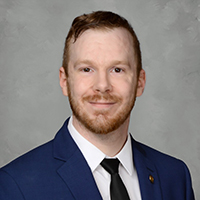
John VerHey, 35
Indiana University School of Medicine
Emergency medicine
Previously: Chef
John VerHey didn’t struggle in school as a child but he didn’t love it, either. He graduated from high school with no plans for college, and wondered, “What am I doing with my life?”
He enrolled in a culinary school near his New Hampshire town; the hands-on nature of learning to cook felt like “the opposite of what I was doing in high school.” He went on to work as a fine dining chef in upscale restaurants, starting off making salads and gradually moving up to leading the kitchen. He enjoyed not only the cooking, but the fast pace and the challenge of meeting the ever-changing variety of customer requests.
But was that his career? VerHey worked with chefs who were passionate about cooking: “They’d work a 12-hour shift and go home and watch the Food Network.” Not him.
His interests were moving toward personal health and fitness. “It started with wanting to get in shape, eat healthier, take care of myself,” VerHey recalls. “I read about nutrition science, gym science. I liked learning how my body works.”
That guided VerHey, at 26, to pursue a degree in medical laboratory science at the University of New Hampshire. He planned to become a lab technician, but decided that “I don’t want to be the person who is running the tests. I want to be the person interpreting the tests.”
He switched to premed, then moved on to medical school. He found himself especially at home in the emergency department, where the fast pace and the unique needs of each patient allowed him to apply the energy and quick thinking that he had honed as a chef.
Although he enjoyed cooking for others, VerHey enters residency knowing that he found his calling in caring for others. “It’s exciting that I found something that I was willing to sacrifice a huge amount of my time to pursue,” he says. “I’ve found that passion. This person who worked in restaurants for 10 years could become a doctor and help people.”
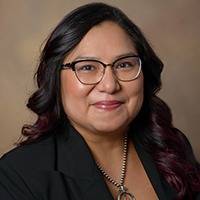
Natasha Hilt, 38
University of Arizona College of Medicine – Tucson
Obstetrics and gynecology
Previously: Social worker
In Navajo Nation, the American Indian reservation where Natasha Hilt grew up, access to health care was limited, and the poor experiences left many people distrustful of the system.
“It’s a joke at home on the rez that you only go to the hospital if you’re ready to die,” Hilt says.
Watching her community struggle to access culturally aware health care, and particularly seeing her aunt die of liver cirrhosis after being misdiagnosed when Hilt was in college, gave her a pull toward a career in medicine.
But first, Hilt served her people by working in various social services jobs. After graduating from Macalester College in St. Paul, Minnesota, Hilt took on a range of nonprofit work, from trying to prevent sex trafficking in indigenous communities to helping Native moms with substance use disorder.
After turning 30, Hilt decided she could no longer ignore her calling to medicine. She moved to Phoenix, Arizona, near her family, took a job as a children’s librarian, and enrolled in premed classes at a local community college. There, she was accepted to a pathway program that helps nontraditional students get into medical school.
Throughout the process, Hilt’s grandma encouraged her to follow her dreams. While her grandma hated going to the doctor, she assured Hilt that she could become the Native doctor she never saw growing up.
And when her grandma became ill with late-stage ovarian cancer during her first year of medical school, Hilt was the one to care for her, even as she was pregnant with her daughter, now three years old.
Hilt’s grandma died that same year, leaving Hilt to struggle through grief and caring for a newborn daughter while attending medical school. Often, Hilt’s husband brought the baby to her school so that she could breastfeed in the car between classes.
“As a first-generation student, you just keep going,” Hilt says.
On Match Day, Hilt’s family will surround her as she attempts to match into an obstetrics and gynecology residency that she hopes will allow her to serve Native women like her grandma.
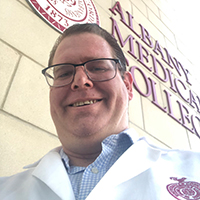
Jason Welles, 45
Albany Medical College, New York
Internal medicine
Previously: Theater, carpentry
In his late teens Jason Welles discovered “where I belong”: The big stage. The stage was in his high school near Fresno, California, where his acting roles included the lead character — conniving gambler Sky Masterson — in “Guys and Dolls.”
Welles’ entertainment dreams led him to earn a BA in film and theater, then to take on a plethora of assignments in local theaters, including acting, stage set-up, and lighting design.
“I was doing what I liked,” Welles recalls. “But you can’t pay the bills doing community theater.”
He gradually moved on to earn a living through jobs in education, carpentry, and medical care.
Medical care?
As a child, Welles had enjoyed “Emergency!”, the hit TV show about paramedics. When he sees an accident on the road, “I’m the first guy to stop. I feel like it’s my duty to jump in.”
Welles fulfilled that helping instinct by working as an EMT, as an ambulance dispatcher, and as a volunteer in the oncology unit at a children’s hospital. “I played video games with the kids and cleaned the toys,” Welles recalls. “I loved being useful.”
He loved that feeling enough to quit a job installing wood stoves in cabins at Yosemite National Park and return to college to beef up his science education so that he could apply to medical school — a decision that was cemented when he worked as an emergency room scribe.
“I felt at home,” Welles says. “I got excited to go to work every day.”
Working rounds in medical school boosted the feeling. “As soon as I put on that white coat and start walking through the hospital, I get a bit of a rush and I’m ready to go,” he says.
Welles hopes to specialize in internal medicine, which was the rotation he enjoyed most and which “fits my reflective style of thinking.”
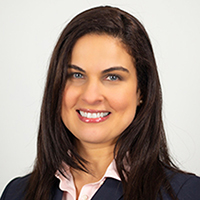
Marianela Feliu, 42
The Ohio State University College of Medicine
Emergency medicine
Previously: Science research technician
Growing up in the Bronx, Marianela “Mary” Feliu repeatedly wished for a dog, but her mother said no. So when Feliu joined the Air Force at age 20 — seeking a career path but not very interested in college — she set out to work with canines in the military police.
Then she suffered a severe leg injury while running an obstacle course at boot camp in San Antonio, Texas, breaking her left tibia and fibula. The treatment was flawed, she says, leaving one of her bones so misaligned that a doctor said she would walk with a cane for the rest her life.
She decided to become a doctor to serve people who often don’t have access to the best care. Fortunately, her military training instructor urged her to sign up for the G.I. Bill, which helped pay for the education she needed to build her credentials for medical school.
Feliu began in community college, moved on to earn a bachelor’s degree in biochemistry at Mount Holyoke College in Massachusetts, then earned a master’s degree in nutrition and metabolism at Boston University (BU). It was a long path strewn with detours and pauses, as Feliu barely scraped by financially and earned average grades. Could she get into medical school?
“I study a lot,” she told professors at BU when she struggled academically. “I understand it, but somehow it doesn’t translate in my test scores.”
Then she was diagnosed with attention deficit hyperactivity disorder. With treatment for that, her grades soared.
In medical school, Feliu “fell in love” with emergency room care. “When I broke my leg in the military, I didn’t have the best experience in the emergency room,” she says. “It comes full circle. Now I can be compassionate and treat people like humans in the emergency room. … I can help the most marginalized [people] in society.”
Thanks to physical therapy, she walks among those patients without a cane. And at home she walks her German Shepherd, Kepler, who loves to play frisbee and take car rides.
“He is my best friend,” Feliu says. “During tough days he makes sure to give me extra kisses and stay by my side.”
